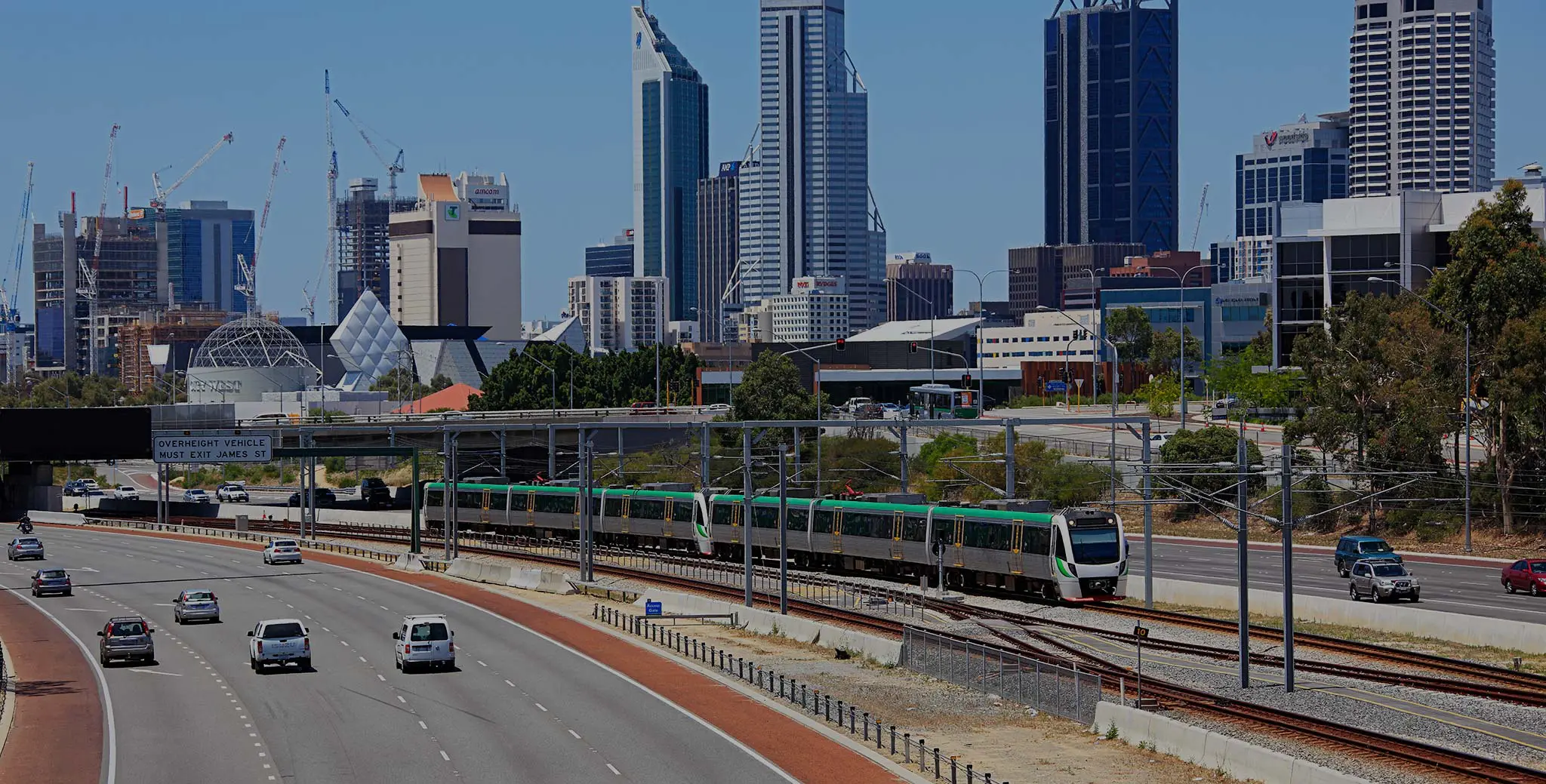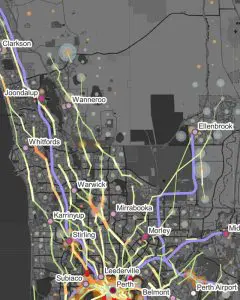
Perth Long-Term Rail Planning
End client
Public Transport Authority of Western Australia
Location
VLC was engaged by the Public Transport Authority (PTA) to provide public transport gap analysis and origin-destination demand analysis to inform long-term planning of the Perth metropolitan passenger rail network.
The analysis included two main components: desire line modelling based on gravity modelling principles to highlight origin-destination demands; and accessibility mapping to highlight gaps in the current and future committed public transport network.
Client requirements
PTA sought to identify current and future year transit accessibility gaps to inform strategic and long-term planning of the public transport network. The project will also inform the basis for proceeding planning stages, such as feasibility studies and formal strategic transport modelling.
Outcomes
Through a collaborative approach with the PTA team, VLC developed high quality visuals to aid the planning of Perth’s future public transport network. The core tool to achieve this objective was the development of desire lines that effectively illustrate origin-destination demands. They provide insight into the latent demand for travel by removing the supply constraints of the actual transport network.

This was complemented by spatially visualised transit travel times as well as accessibility to employment based on transit travel times. Combined, the output provided extensive insight into both future and current provision gaps.
Innovation achieved
The team extended a bespoke trip generation, trip attraction, trip distribution, and trip assignment model originally developed by VLC in 2022. It combines linear and logistic regression models, a gravity-based constrained optimization, and a simple assignment algorithm to produce desire line flows across the Perth metropolitan area. The methodology was extended as a part of the project to produce directed demand flows. The resulting demand flows highlights latent demand by removing real-world network constraints.